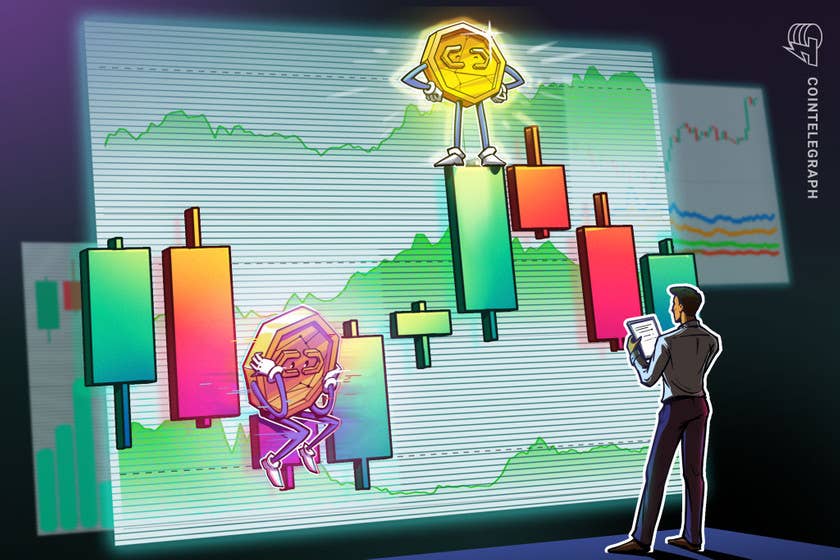A whole new exciting world of value is being coded into life right now by gamers. While it may be a far cry from the lofty ideals of banking the unbanked and taking down the global banking system, gaming is gearing up to be a massive force in the crypto space.
Addictively fun games will draw a whole new base of users into the crypto economy. Gamers are an excellent target market for adoption because many gamers are a touch more tech savvy than the average internet user and tend to be a bit more open to new ideas.
Just imagine this — a gamer beating a monster, picking up a rare item, selling that item for Ether (ETH) on a secondary market, and then using that Ether to buy a new hat online. This creates a whole new network of value that is liquid, fast and global — and most importantly, taps into gamers’ existing behavior: playing games.
But for this exciting future to transpire, games need to be fun… addictively fun. Up until now, most crypto games have been little more than retro 1980s throwbacks — with very simple graphics and limited playability — which is nice for nostalgia but will not add anything significant to the crypto economy. However, a new class of games is changing this scenario and is set to take crypto games into the leagues of the truly great online games.
NFTs pave the way
Before looking at some examples, it is important to note that all of this has been enabled by nonfungible token technology, which allows for the proliferation of in-game digital assets on public blockchains.
Gaming could possibly be one of the major contributors to the crypto economy, with game developers making new token standards and technical developments that benefit the entire ecosystem — as well as the players of these games generating significant on-chain activity that helps to feed the miners. So, let us not make the mistake of thinking that crypto games are not lifting their weight in terms of ecosystem development.
Here are a couple of examples of what is being built and played.
Gods Unchained is bringing the wonder and excitement of a collectible card game like Magic: The Gathering to Ethereum. Gods Unchained is graphically enticing and has a great in-game flow of animations that keep the action rolling. The game has already attracted thousands of players to tournaments and continues to find a growing community of enthusiasts. Under the hood, players own the cards that they play with, storing the unique nonfungible tokens in their Ethereum wallet. Rarity is provable on-chain, and swaps on the secondary market are seamless. In February, a card sold for $62,000, which is astonishing for such a new game and really underlines the excitement building around crypto games.
Related: Blizzard Bans Hearthstone Player, Blockchain Comes to Rescue
Then, there is the Enjinverse, which is a growing multi-game experience that allows for in-game items to be used and moved seamlessly between dozens of games. Enjin itself is one of the most important cryptocurrencies in the gaming realm. One of the most interesting games in the Enjinverse is Age of Rust, which is a post-apocalyptic sci-fi adventure with stunning graphics and an enticing story. Looking at the popularity of games like Dead Space or Fallout, it becomes clear that Age of Rust stands a good chance of gaining significant popularity.
While the game itself is exciting, it is the underlying tech that really makes Age of Rust stand out: Not only are Enjin assets interoperable between games, but they also have value baked into them. So, regardless of the long-term outcome of the game itself, the items you acquire in the game all are forged with Enjin tokens melted into the in-game asset. These assets can be melted back down at any time, enabling you to claim the tokens underpinning the value of the item — as well as creating increased scarcity for the item class, as once it is melted, that item it gone forever.
Here are some major players to watch. Enjin is working closely with Unity, which accounts for nearly half of all game developers globally. Cocos has 1.4 million game developers using its engine, and the launch of its blockchain is likely to bring many of those developers over. Loom is focused on interchain operability and on enabling fun, user-facing games that will draw more users into crypto — with such titles as Neon District, which is a Blade Runner-esque RPG.
According to the recent research conducted by a gaming and e-sport analytics provider, the gaming industry as a whole is expected to be worth $180 billion by 2021, so the opportunity for crypto gaming is massive. For players, there will be better experiences; for developers, there will be more tools to attract players to their games; and for investors, there will be the ability to own the cryptos that will be at the forefront of a major trend — but that has not yet taken off.
Author’s disclosure: I own cryptocurrency and some in-game assets for Gods Unchained and the Enjinverse.
The views, thoughts and opinions expressed here are the author’s alone and do not necessarily reflect or represent the views and opinions of Cointelegraph.
Lark Davis — aka the Crypto Lark — is New Zealand’s most popular crypto and Bitcoin personality. He grew up on a small organic homestead, reading Mad magazine, dreaming of space travel and pretending to be Indiana Jones. Known for his articulate, entertaining style, Lark combines his political science background, critical thinking skills and bright sense of humor to produce content that explores blockchain solutions for a corrupted world.









